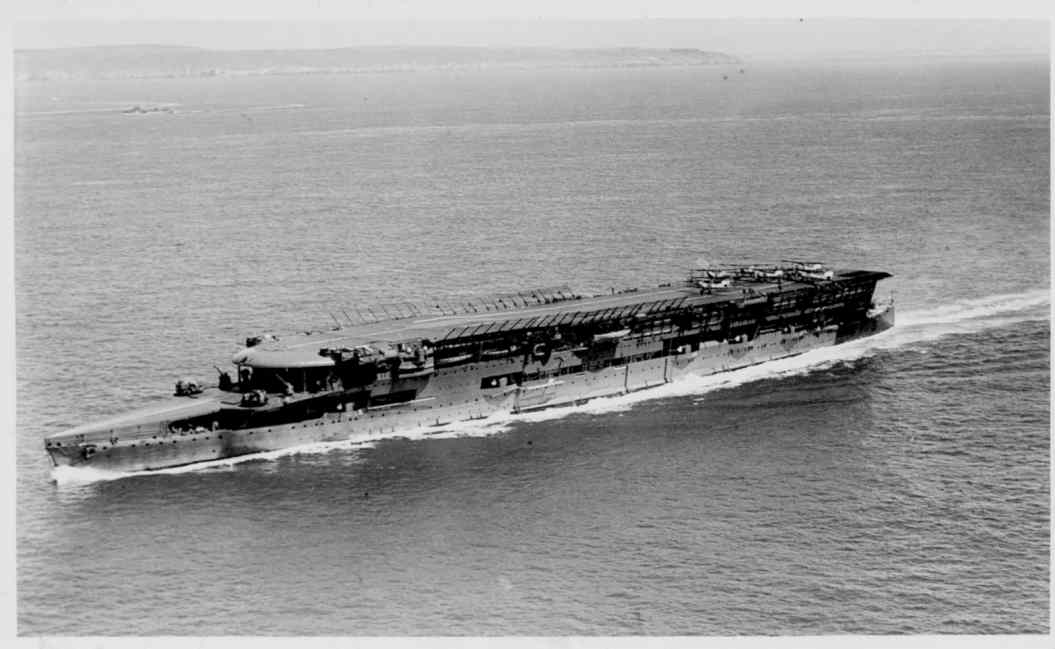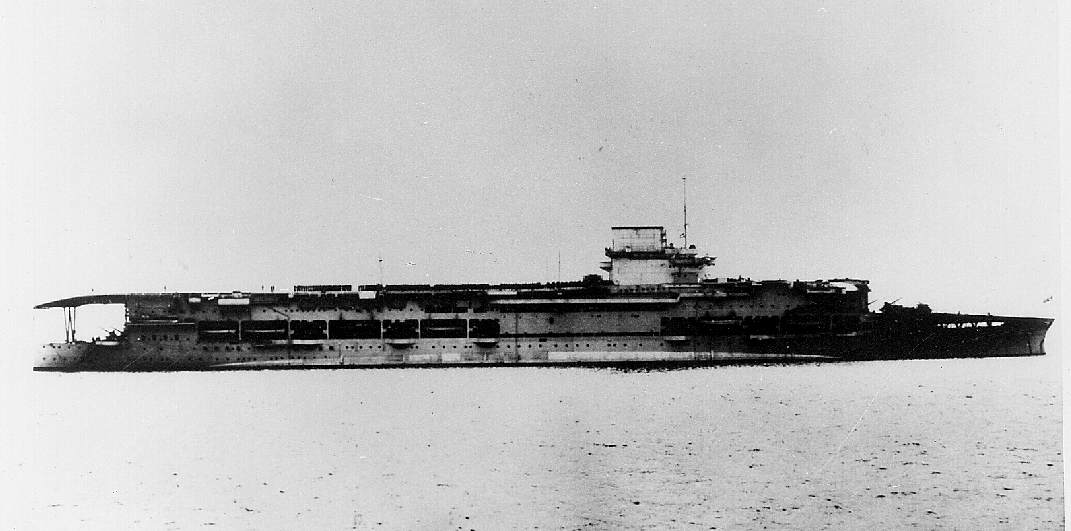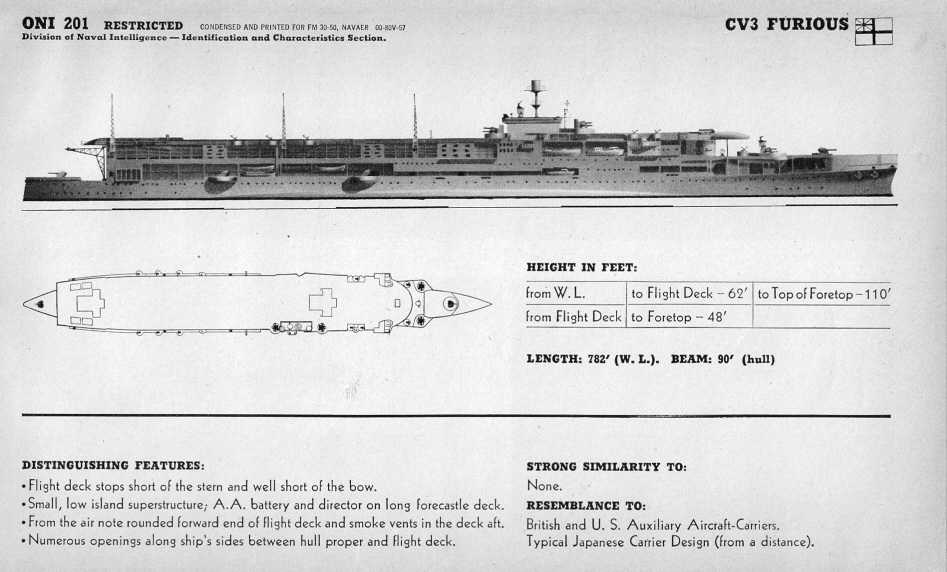If I could choose upgrades for the three Courageous ships it would be:
1) New twin catapults and arrestor systems for heavier weight aircraft
2) Move Furious’ exhaust to an expanded island, same as the other two ships
3) Change to square lifts
4) Replace 16 × 1 – QF 4.7-inch AA with new AA
5) Add radar
6) Flatten entire flight deck
7) Add avgas capacity (if possible)
And...... since we can’t extend the flight deck forward, can we reestablish the forward flying off deck from the upper hangar? Though I think the bow door may be too narrow for anything but smaller fighters.
A solid set for the most part, but there are a few issues.
For AA, it really depends on what year they're being refitted to determine what's ready in time and what would fit. For instance, the QF 4.5" is a better weapon all around than the older 4.7"- it fires a heavier projectile farther and faster and the mounts train and elevate better. The problem is that the 4.5" is also heavier, and in ships as light as these, that's a real concern.
For more avgas and stores, you could bulge them, but that takes time and money, and lots of both- which may leave them out of action at a critical time. The
Courageous class' hull form, being quite shallow also isn't ideal. They already couldn't make their designed 32 knots despite their machinery making more horsepower than expected, and a shallow draught on very fine ships such as these leaves them vulnerable to heeling excessively during high speed turns. Bulging can mitigate that, but expect to lose a knot or two.
As for a lower catapult, in addition to it being all but useless in moderate to heavy seas, it would need a very short stroke and as a consequence, exert a lot of force on the aircraft being launched. You'd be restricted to a narrow range of types.




